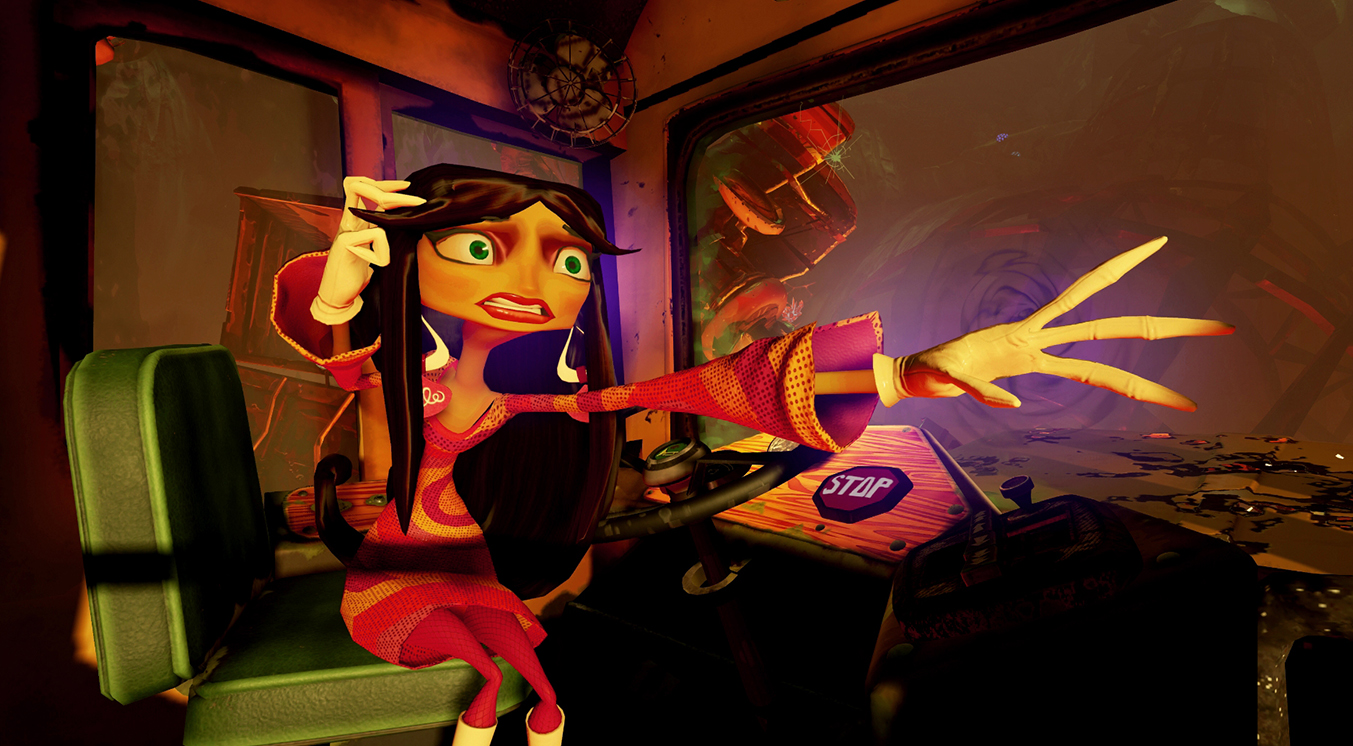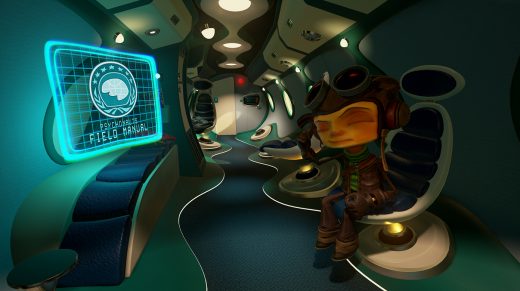‘Psychonauts’ in VR is a story Tim Schafer never planned to tell
It’s almost poetic. Just as Psychonauts was Double Fine’s first game as a new-development studio, Psychonauts in the Rhombus of Ruin is the company’s first game made exclusively for virtual reality — and it picks up the story exactly where the original game left it. Rasputin (“Raz,” for short) has officially been inducted into a group of psychic secret agents and is heading out on his first mission: to rescue Truman Zannotto, the leader of the Psychonauts. For anyone who played the original game, it seems like an obvious place to resume the narrative. Schafer, on the other hand, says it’s a story he never planned to tell.
“We weren’t going to tell the story about you running off to save the head of the Psychonauts,” he told me in an interview this week at the company’s San Francisco office. Schafer always imagined the rescue operation happening off screen, with any prospective sequels picking up after the team had returned to headquarters. “We thought it would just be referred to,” he said. “Oh, remember that time we went and saved the president of the Psychonauts?” That’s still the plan for the game’s crowdfunded sequel, but the company’s VR project gave Schafer a new platform for storytelling. “It seemed like a natural fit. “We could actually tell this story, this secret mission you go on in-between these two games, and still make it a standalone, fun spy adventure.”
Adventure is the key word, too. Unlike the original game, a 3D platformer, Psychonauts in the Rhombus of Ruin is a first-person take on the point-and-click adventure akin to Broken Age or the SCUMM games Shafer used to make at LucasArts. The player wears the PlayStation VR headset to settle behind the eyes of Raz, and uses his psychic powers to interact with the world. You can use telekinesis to open doors, flip switches and interact with items, distract enemies with PSI-blasts and light things on fire with pyrokinesis. It works surprisingly well, locking the power to the center of your vision. As I watched a book I was intently staring at rise off the ground, I almost felt like I actually had psychic powers.
The psychic make-believe works great, but as a player, you don’t move much. The game is played entirely from a seated position, a restriction imposed by Schafer himself. “I get really uncomfortable and have simulation sickness,” he said. “We wanted to know our game would be playable to everybody, including people susceptible to that.”
Rhombus gets around Schafer’s movement constraint by using Raz’s power of clairvoyance to let the player see through the eyes of any character in her vision. It’s a twist on the “teleportation” gimmick common to seated VR experiences, backing up the warp-based travel mechanic with the game’s lore. “It’s not just a random teleportation,” Schafer said. “You’re using clairvoyance to see the world from someone else’s point of view.”
It’s more than just an excuse to let the seated player see more of the world, though — it’s an empathic experience. Some characters in the game perceive the world differently than Raz, and while using clairvoyance, the player can see those discrepancies first-hand. “Everyone doesn’t just see the world from a different 3D space,” Schafer said. “They see it from a different emotional place, too. We try to show that with the gameplay.”

This adds a twist to the traditional adventure-game mechanics Rhombus thrives on. Sure, you’re looking for clues for physical puzzles in the game world, but you’re also looking for clues on how to help other characters based on how they personally see that world. “You have to understand what they’re going through in order to figure out what would help them get out of it,” Schafer said. It adds a layer of empathy to the game’s puzzles. “Getting inside someone’s mind helps you see their world, feel their pain, see what scares them.” Schafer describes it as the game’s emotional core. “I think at its root, Psychonauts has always been about empathy.”
Tim Schafer adds one more thing as I pack up and leave his office. “Did I mention the game’s fun?” It is.
Tim Schafer’s Psychonauts is the definition of a modern cult classic. Despite winning multiple awards and the adoration of critics, Double Fine’s first game sold poorly. Good games, however, don’t go unplayed. Over the course of a decade, Psychonauts… Engadget RSS Feed
(16)



